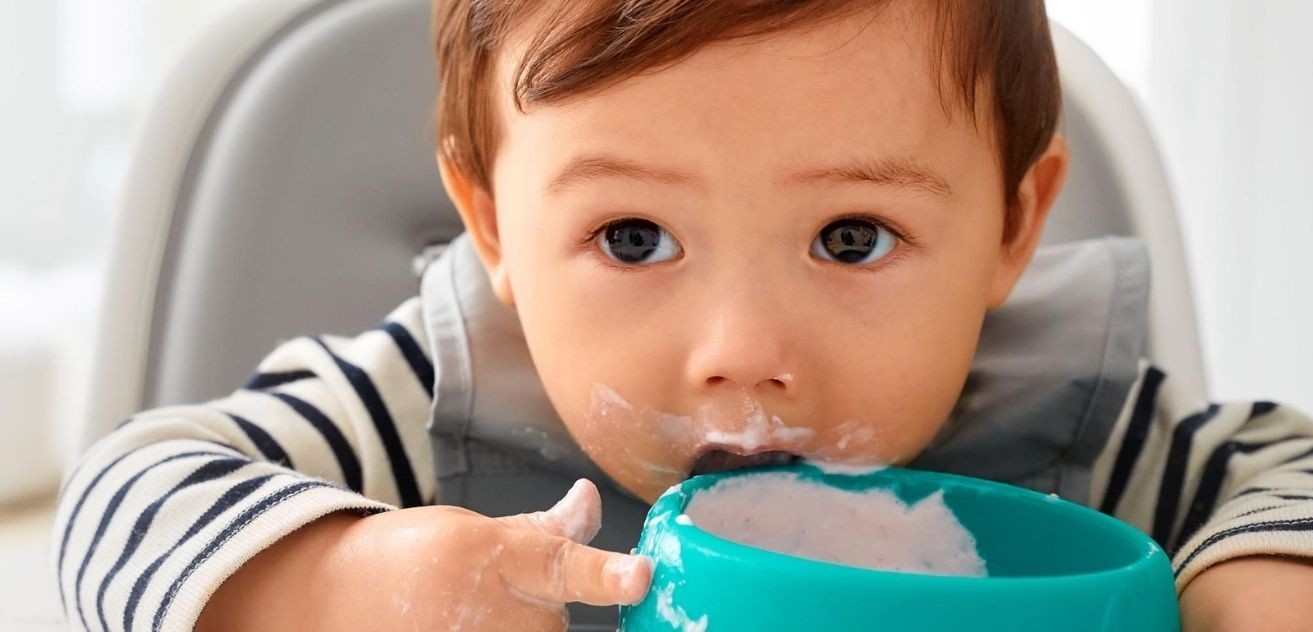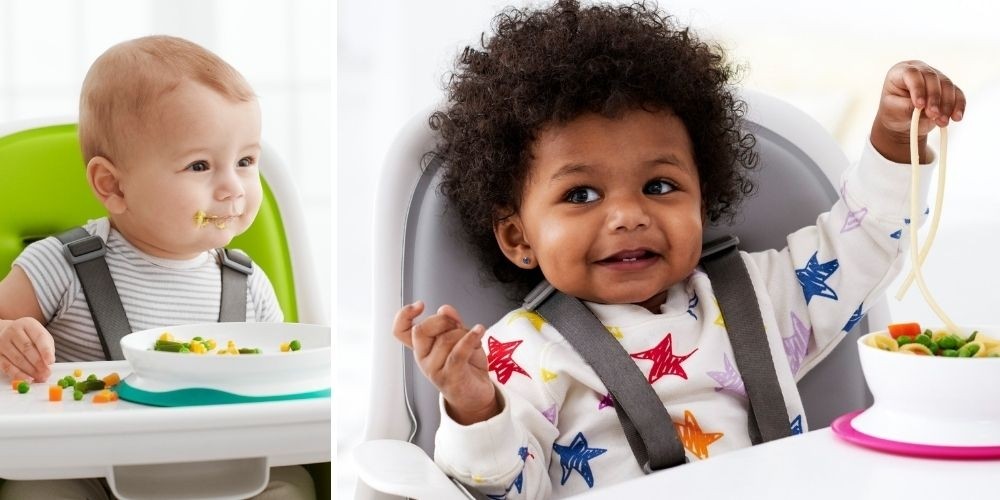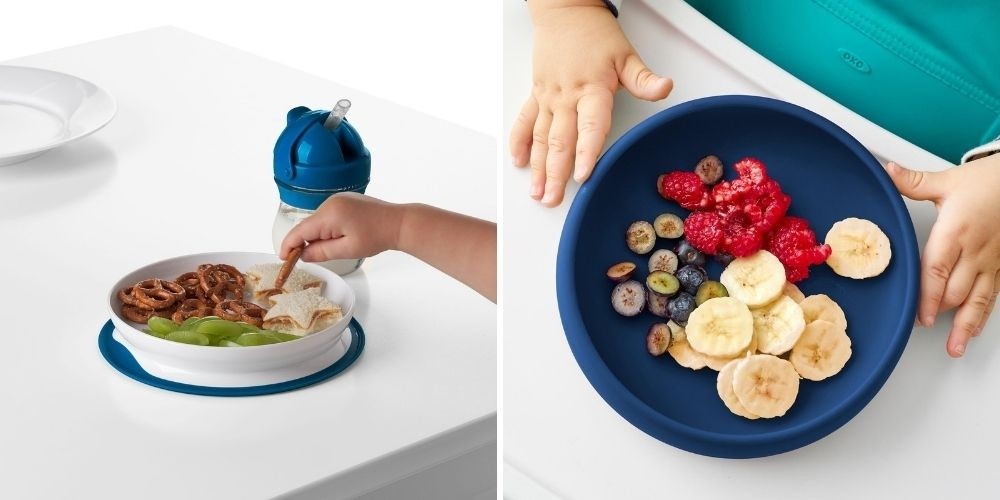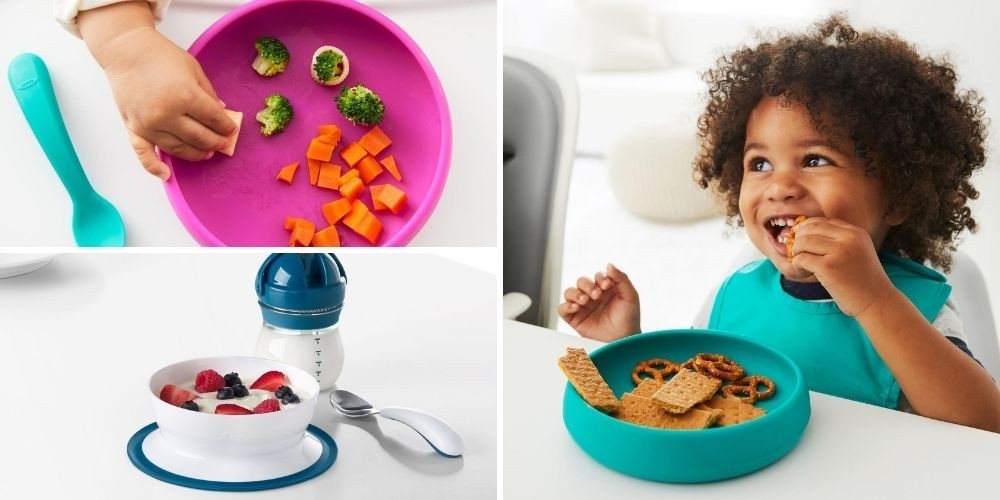
How to stop your baby from throwing food
How do you teach your little ones to keep their food on the tray instead of tossing it on the floor? It’s all about mixing up a dash of training with an ounce of prevention. As your baby learns how to eat solids, at some point he’ll discover that throwing food on the floor is fun. What do you do then? You don’t want to encourage this behavior, but you don’t want to squash his budding curiosity either. We have good news: You absolutely can keep up the positive cues while also preventing a big mess.
Here’s a look at why the food-tossing happens in the first place, along with a few great tips for keeping the chaos at bay.
Understanding Why Babies Throw Food
When little ones are starting solids, they’ll eventually notice that food can go somewhere other than their mouths, i.e. on the floor, or the walls, or the furniture. This is super-interesting to infants, since it’s an early lesson in cause and effect. They’re learning that they can propel an object with their hands—and observing what it looks and sounds like when they do. And of course, they get to see how mom and dad react.
Babies also throw food to communicate. They may be letting you know that they don’t care for a particular food or that they’re finished eating.
You don’t need to punish your baby for her natural curiosity or her attempts to communicate, but you can prevent the mess. Using a mix of prevention tricks and a little bit of training, you can teach your baby to keep her food on her tray.

Giving Babies a Place to Put Unwanted Foods
Little ones can be picky. Their evolving palates are sensitive to texture, and they might only be willing to eat certain foods in the early stages of starting solids. If you find that your baby isn’t interested yet in exploring some of the flavors or textures you’re offering, grab a small bowl for him to put his rejects into, or teach him to hand you any foods he doesn’t want.
To help your baby learn a new skill—other than chucking the discarded food on the floor—give him a positive redirection like “Put it in the pink bowl.” Stay consistent and remind your baby about the new trick every time, until it becomes a habit.
Teaching Your Baby How to Signal “All Done”
Since babies have limited options for how to communicate what they want—or don’t want—they often toss food off the tray just to signal that they’re not hungry anymore. But making a mess doesn’t have to be your baby’s only way to signal that mealtime is over. Even the littlest member of the family can learn how to get her point across using sign language.
To show your baby how to make the American Sign Language (ASL) sign for “all done,” hold up both hands and rotate your wrists. If you remember to use the hand sign and say “all done” every time your baby is finished eating, she’ll catch on.

Using Suction Plates to Reduce the Mess
Children under two don’t yet have the cognitive ability to fully understand or adhere to strict behavioral expectations. So when it comes to preventing a food disaster at mealtimes, prevention is often your best bet. Parents can set their little ones up for success by removing the option of creating a mess in the first place. One way to do this is by serving up the food on a suction plate. The plate affixes onto the high chair tray and stays put, preventing your baby from picking it up and tossing it overboard. Another option is a plate with a weighted bottom. Because of its weight, this plate makes it very challenging, even impossible, for little hands to move it or throw it over.
Offering Up Smaller Amounts of Food At a Time
Another way of keeping your baby from throwing food everywhere is by offering up the bites little by little. If you have the time and patience to try that method, it can work wonders—although the reason why it does is a mystery. Whether it’s because offering up small portions at a time creates an illusion of scarcity that makes babies want to eat, or because tiny amounts of food keep babies from feeling overwhelmed, the approach is worth a try.
And if your baby does decide to throw her food anyway? At least she can only toss a tiny amount on the floor, so you’ll end up with less of a mess to clean up.

Building on the Cause and Effect Lesson
A baby who throws food off the high chair and watches what happens to it can understand basic consequences. Seeing food land on the floor is one of your child’s first lessons in cause and effect—and you can use the situation to your advantage by showing your little one what happens after the food drops: It needs to get cleaned up.
Once the food-throwing begins, you can get your baby down from the high chair and help him pick up the mess, or you can simply end the meal. You can also combine these two effects. Just remember to remain positive and steer clear of any reprimanding when you do this. If you remain consistent, it won’t take long for your baby to make the connection between tossing food and having to clean it up—and for you to see a difference in how your floor looks when the meal is done.
Related posts
In the picture: BeSafe Pregnant
in 'Blogpost'
The benefits of a swaddling bag
in 'Blogpost'
How do I choose the right sleeping bag?
in 'Blogpost'
